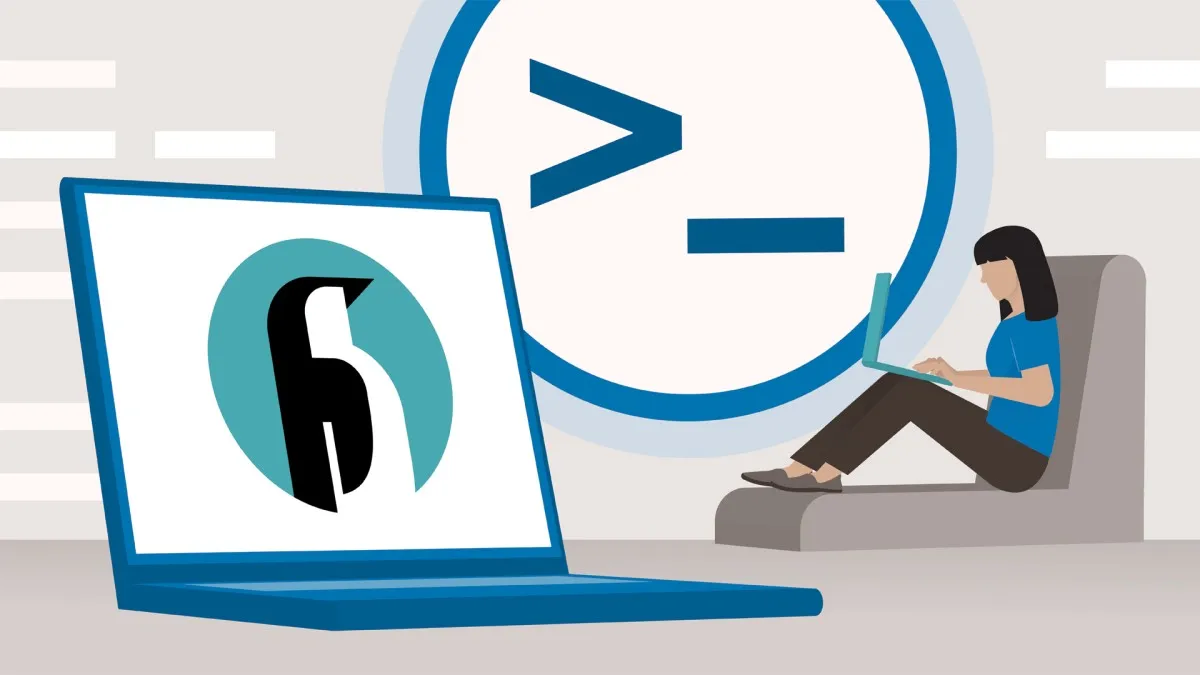
Learning Linux Command Line 
Gain the skills to navigate and manage Linux systems using the command line and Bash shell. Learn to use Linux commands to explore the file and folder structure, exit text, set permissions, and install and update software. ▼
ADVERTISEMENT
Course Feature
![]() Cost:
Cost:
Free Trial
![]() Provider:
Provider:
LinkedIn Learning
![]() Certificate:
Certificate:
No Information
![]() Language:
Language:
English
![]() Start Date:
Start Date:
Self Paced
Course Overview
❗The content presented here is sourced directly from LinkedIn Learning platform. For comprehensive course details, including enrollment information, simply click on the 'Go to class' link on our website.
Updated in [March 06th, 2023]
This course provides an overview of the Linux command line. Students will learn the basics of working with the Bash shell, focusing on practical Linux commands with examples that help them navigate through the file and folder structure, edit text, and set permissions. Additionally, students will become familiar with common command-line tools such as grep, awk, and sed, as well as command-line apps such as the nano and Vim text editors. Finally, the course will cover how to install and update software with a package manager.
[Applications]
After completing this course, learners can apply their knowledge of the Linux command line to manage their Linux systems. They can use the Bash shell to navigate the file and folder structure, edit text, and set permissions. Learners can also use the common command-line tools, such as grep, awk, and sed, and command-line apps such as the nano and Vim text editors. Finally, learners can use a package manager to install and update software.
[Career Paths]
1. Linux System Administrator: As a Linux System Administrator, you will be responsible for managing and maintaining Linux systems, including installation, configuration, security, and troubleshooting. You will also be responsible for monitoring system performance and ensuring that all systems are running optimally. Additionally, you will need to be familiar with scripting languages such as Bash and Python, as well as the Linux command line. This role is becoming increasingly important as more organizations move to cloud-based solutions and virtualization.
2. Linux Developer: As a Linux Developer, you will be responsible for developing applications and software for Linux systems. You will need to be familiar with scripting languages such as Bash and Python, as well as the Linux command line. Additionally, you will need to be knowledgeable about Linux system architecture and be able to troubleshoot any issues that arise. This role is becoming increasingly important as more organizations move to cloud-based solutions and virtualization.
3. Linux Network Engineer: As a Linux Network Engineer, you will be responsible for designing, implementing, and maintaining Linux-based networks. You will need to be familiar with scripting languages such as Bash and Python, as well as the Linux command line. Additionally, you will need to be knowledgeable about Linux system architecture and be able to troubleshoot any issues that arise. This role is becoming increasingly important as more organizations move to cloud-based solutions and virtualization.
4. Linux Security Engineer: As a Linux Security Engineer, you will be responsible for designing, implementing, and maintaining security measures for Linux systems. You will need to be familiar with scripting languages such as Bash and Python, as well as the Linux command line. Additionally, you will need to be knowledgeable about Linux system architecture and be able to troubleshoot any issues that arise. This role is becoming increasingly important as more organizations move to cloud-based solutions and virtualization.
[Education Paths]
1. Bachelor of Science in Computer Science: This degree path provides a comprehensive understanding of computer science, including topics such as programming, software engineering, computer architecture, and operating systems. With a focus on Linux, students will learn how to use the command line to manage files, create scripts, and troubleshoot system issues. Additionally, they will gain an understanding of the developing trends in Linux, such as cloud computing and virtualization.
2. Bachelor of Science in Information Technology: This degree path focuses on the application of technology to solve business problems. Students will learn how to use the Linux command line to manage networks, configure systems, and develop applications. They will also gain an understanding of the developing trends in Linux, such as containerization and automation.
3. Master of Science in Computer Science: This degree path provides an in-depth understanding of computer science, including topics such as programming, software engineering, computer architecture, and operating systems. With a focus on Linux, students will learn how to use the command line to manage files, create scripts, and troubleshoot system issues. Additionally, they will gain an understanding of the developing trends in Linux, such as cloud computing and virtualization.
4. Master of Science in Information Technology: This degree path focuses on the application of technology to solve business problems. Students will learn how to use the Linux command line to manage networks, configure systems, and develop applications. They will also gain an understanding of the developing trends in Linux, such as containerization and automation.
Course Provider

Provider LinkedIn Learning's Stats at AZClass
Learners can learn the basics of using the Linux command line using the Bash shell, including how to navigate file and folder structures, edit text, and set permissions. They can also learn common command-line tools such as grep, awk, and sed, and command-line applications such as nano and the Vim text editor. Additionally, learners can learn how to install and update software using package managers. This course is essential for anyone using the open source Linux operating system and looking to become proficient at the command line.
Discussion and Reviews
0.0 (Based on 0 reviews)
Explore Similar Online Courses

Learning for a Sustainable Future: Live at COP26

Learn JavaScript for Web Development

Python for Informatics: Exploring Information

Social Network Analysis

Introduction to Systematic Review and Meta-Analysis

The Analytics Edge

DCO042 - Python For Informatics

Causal Diagrams: Draw Your Assumptions Before Your Conclusions

Whole genome sequencing of bacterial genomes - tools and applications

Introduction to Linux : Full Course for Beginners

The 50 Most Popular Linux & Terminal Commands - Full Course for Beginners


Start your review of Learning Linux Command Line